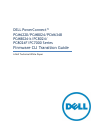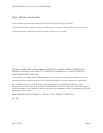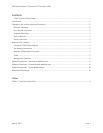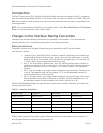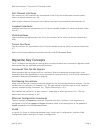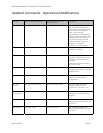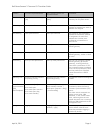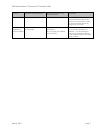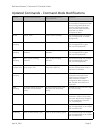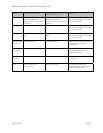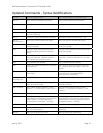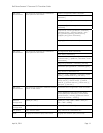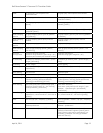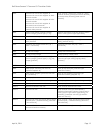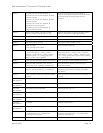
Dell PowerConnect™ Firmware CLI Transition Guide
April 6, 2011 Page 2
Introduction
The Dell™ PowerConnect CLI Transition Guide White Paper discusses the changes in the CLI commands
from the PowerConnect 6200 and 8024 3.x software to the 4.x software release on the 6200, 7000, and
8000 Series switches. Some changes were syntactical only and some were functional as specified in the
following sections.
NOTE: Not all commands are available on all switches. Refer to the D
ELL POWERCONNECT CLI REFERENCE
GUIDE for commands specific to your switch model.
Changes to the Interface Naming Convention
Changes to the Interface Naming Conventions are applicable to all switches. The conventions for
naming interfaces in CLI commands are described in the following sections.
Ethernet Interfaces
The gigabit Ethernet and 10-gigabit Ethernet ports are identified in the CLI by the variable
unit/slot/port, where:
•
<Interface Type> Unit#/Slot#/Port#—Identifies a specific interface by the interface type
tag followed by the Unit# followed by a / symbol, then the Slot# followed by a / symbol,
and then the Port#.
For example, gi2/0/10
identifies the gigabit port 10 in slot 0 on unit
2.
Table 1
below lists the supported interface type tags.
•
Unit
#—The unit number is greater than 1 only in a stacking solution where a number of
switches are stacked to form a virtual switch. In this case, the Unit# indicates the logical
position of the switch in a stack. The range is 1–12. The unit value is 1 for standalone
switches.
•
Slot
#—The slot number is an integer number assigned to a particular slot. Fixed ports are
in slot 0. The expansion slots use slot numbers 1 or 2. Use the
show slot
command to
retrieve information for a particular slot.
•
Port #
—The port number is an integer number assigned to the physical port on the switch
and corresponds to the number printed next to the port. Ports are numbered from 1 to
the maximum number of ports available on the switch, typically 24 or 48.
Within the CLI REFERENCE GUIDE, the tag interface–id refers to an interface identifier that follows the
naming convention above.
Table 1: Interface Identifiers
Interface Type Long Form Short Form Identifier
Gigabit Ethernet gigabitethernet gi (gi was g) unit/slot/port
10–Gigabit Ethernet tengigabitethernet te (te was xg) unit/slot/port
Loopback loopback lo Loopback-id (0–7)
Port Channel port-channel po port-channel-number
Tunnel tunnel tu tunnel-id (0–7)
VLAN vlan vl vlan-id (1–4093)
When listed in command line output, gigabit Ethernet interfaces are preceded by the characters Gi,
and 10-gigabit Ethernet interfaces are preceded by Te.



